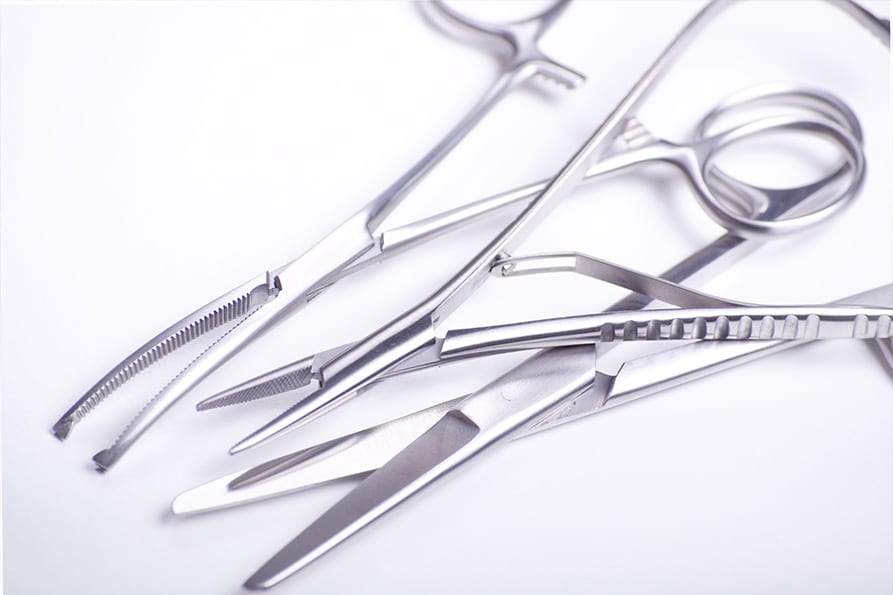
Nickel is a hard, ductile metal that is silvery-white in color. It is present in some types of stainless steel, including formulations that medical device manufacturers often use in producing instruments and devices. Its physical characteristics make it useful in that role.
Unfortunately, some people have what is called nickel sensitivity or a nickel allergy, and many are unaware they have it. Mayo Clinic explains that a nickel allergy is a common cause of contact dermatitis. This condition causes an itchy rash whenever you touch the material to which you are allergic. And if you develop nickel sensitivity, you have it for life. Doctors can treat but not cure it.
Additional nickel allergy symptoms include red or irritated skin, other changes in skin color, dry patches of skin that appear to be burned, and in extreme cases, fluid-filled blisters.
Nickel Sensitivity and Patient Care
It goes without saying that healthcare providers do not want to cause allergic reactions of any kind in their patients. Care teams already have enough to be concerned about, like the risk of infections and other problems.
At the same time, the use of nickel in devices and instruments is deeply ingrained in medical manufacturing. Consequently, healthcare organizations may find it hard to obtain items that do not contain nickel.
In fact, it is not uncommon for a medical device to have as much as 50% nickel. For someone with a nickel allergy—particularly a severe one—coming into contact with an item like that is unpleasant at best! But, of course, if a patient needs a particular medical procedure to get or stay healthy, they are likely to endure the discomfort of nickel sensitivity to achieve their goal.
Fortunately, there is a way for people to get the care they need without having to tolerate a rash or blisters.
Keeping Irritating Nickel at Bay with Chromium
The pure metallic chromium in our ME-92® coating keeps the nickel in stainless-steel instruments and devices from touching a patient’s skin. Essentially, it encapsulates the metal, keeping nickel at bay. And no contact means no irritation.
Plus, ME-92® provides several other critical benefits for medical assets. For example, it is the first chromium coating to pass the Tripartite Guidelines testing for biocompatibility. It also prevents corrosion, keeps cutting edges sharp, is chemical resistant and hydrophobic, creates a smooth-gliding surface, reduces high-intensity light reflection and refraction, and eliminates galling, fretting, and spalling.
Why Expose Patients to Nickel?
As noted above, many people do not know they have nickel sensitivity or allergy until they have had a medical procedure. Then, in addition to recovering from it, they have to take action to resolve the rash or blisters. Mayo Clinic says that can involve treatments like steroid creams, nonsteroidal creams, oral corticosteroids, oral antihistamines for the itch, and phototherapy.
A much better approach is to assume that every patient is allergic to nickel and coat the stainless-steel surfaces they might come into contact with chromium. That way, everyone wins. Patients avoid an uncomfortable reaction, care teams get instruments and devices that are easy to use, clean, and sterilize, and hospital administrators appreciate that both groups are happy!
A Simple, Cost-Effective Solution to Nickel Sensitivity
ME-92® is an innovative medical device coating that is easy for the ME-92 Operations team to apply. They work with healthcare providers to understand their needs, propose solutions, and coordinate logistics once the organization has selected an approach.
And because ME-92 Operations performs all work internally (rather than “farming out” specific processes), supply chain disruptions do not affect project timelines. Parts leave the manufacturer or end-user location, are gone for a short time, and return with a pristine chromium coating and zero risk of an allergic reaction in patients.
Coating items in chromium is a cost-effective strategy, as well. ME-92® keeps instruments and devices performing as designed for significantly longer than uncoated items. It also helps metal assets maintain a like-new appearance through countless cleaning and disinfecting cycles. That is important to the healthcare professionals that use the items and patients who see the devices and instruments. Both go into procedures with greater confidence.
As a result of these benefits, healthcare providers find that the cost of chromium coatings is less than their repair and replacement expenses—often considerably less.
ME-92 Operations can apply chromium coatings as part of the manufacturing process, as a scheduled project after items are already in service, or on an urgent basis.
So, the bottom line is that there is no reason to expose people who might be allergic to nickel when encapsulating the metal in chromium is easy and improves the instrument or device in many ways!